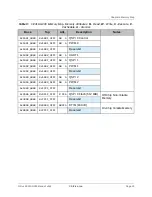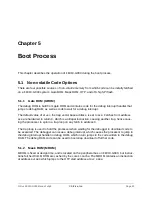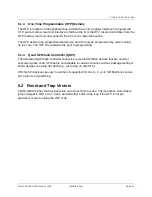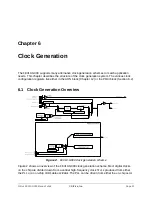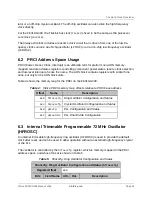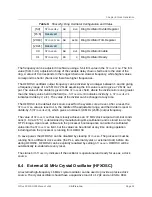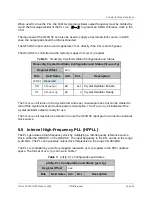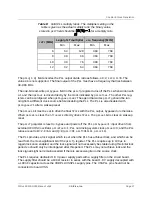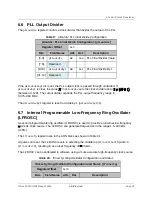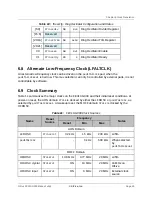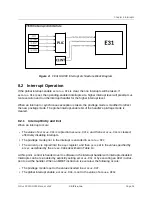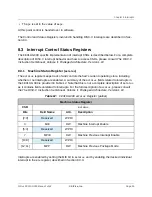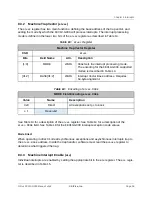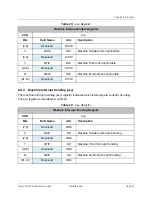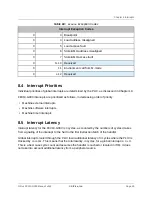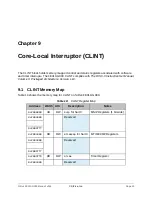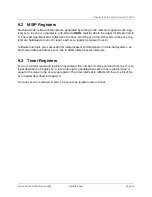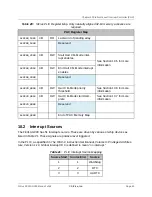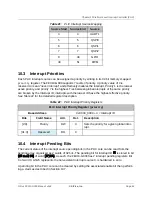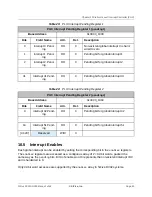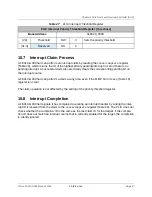
Chapter 8
Interrupts
This chapter describes how interrupt concepts in the RISC‑V architecture apply to the
FE310-G000.
The definitive resource for information about the RISC‑V interrupt architecture is
The RISC‑V
Instruction Set Manual, Volume II: Privileged Architecture, Version 1.10
.
8.1
Interrupt Concepts
The FE310-G000 supports Machine Mode interrupts. It also has support for the following types
of RISC‑V interrupts: local and global.
Local interrupts are signaled directly to an individual hart with a dedicated interrupt value. This
allows for reduced interrupt latency as no arbitration is required to determine which hart will ser-
vice a given request and no additional memory accesses are required to determine the cause of
the interrupt.
Software and timer interrupts are local interrupts generated by the Core-Local Interruptor
(CLINT). The FE310-G000 contains no other local interrupt sources.
Global interrupts, by contrast, are routed through a Platform-Level Interrupt Controller (PLIC),
which can direct interrupts to any hart in the system via the external interrupt. Decoupling global
interrupts from the hart(s) allows the design of the PLIC to be tailored to the platform, permitting
a broad range of attributes like the number of interrupts and the prioritization and routing
schemes.
This chapter describes the FE310-G000 interrupt architecture.
Chapter 9 describes the Core-Local Interruptor.
Chapter 10 describes the global interrupt architecture and the PLIC design.
The FE310-G000 interrupt architecture is depicted in Figure 4.
SiFive FE310-G000 Manual: v3p2
© SiFive, Inc.
Page 33

